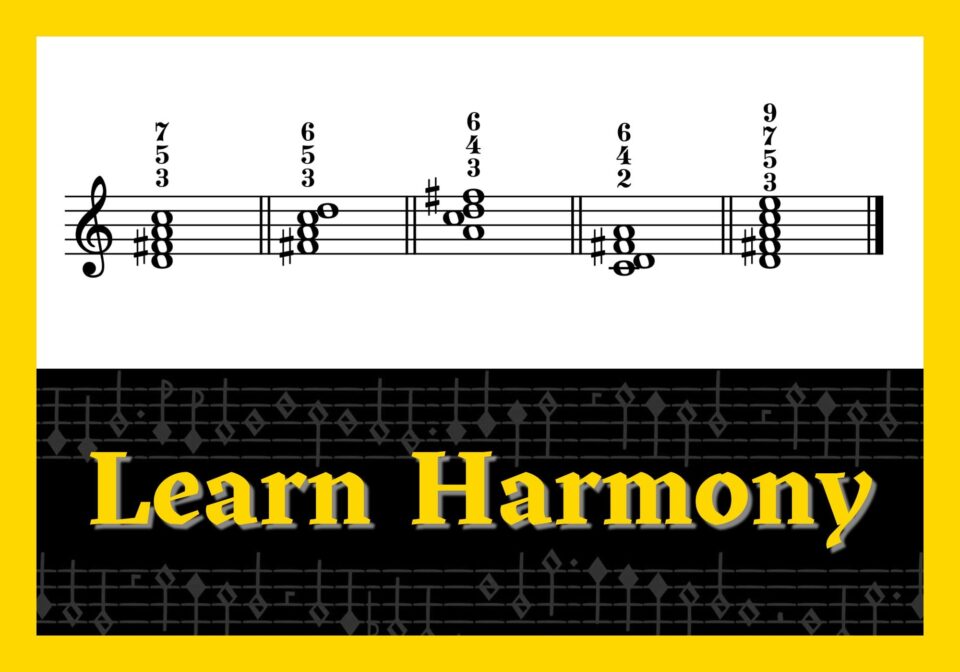Learning harmony is anything but easy…
While there are rules that are more or less always valid, it’s not an exact science.
The risk of choosing the wrong method is very high, the danger of doing useless exercises is always lurking, and the fear of wasting time, and often also money, with approaches that only create more confusion threatens every musician!
Our brain processes information in a certain order, which is why the order in which you study topics is as important as the topics themselves!
Learning the right chords, practicing them in the right order, allows you to avoid confusion and helps you learn smoothly, giving you that gratification that only music can give!
I’m Richardus, the Musicus Practicus of the web, and in this Musicus’ Guide, I’ll show you a very effective path that I have personally tested, and with which I have seen remarkable progress with my Apprentice Musicians all over the world through my online lessons!
Learning Harmony: a Stage of an exciting Musical Adventure
When we talk about harmony, we are discussing an aspect of musical composition that’s as important as others.
Harmony is what describes the vertical dimension of music, in simpler terms, chords.
It’s also true that thinking of a composition only in terms of chords is a very limited approach. In fact, there are other techniques to learn, such as counterpoint and musical rhetoric.
- Harmony is needed to understand and master the verticality of music.
- Counterpoint is needed to shape effective melodies.
- Musical rhetoric is needed to plot a convincing path of the musical speech that can effectively convey the message.

Now let’s break down the Harmony journey into stages, each with specific and precise skills to learn.

First Stage: Consonances
The first important stage of this journey is the study of consonances and chords that do not contain dissonances in their construction.
Consonances are those intervals that sound good (from the Latin cum-sonare), and in music, there are four, or in some cases five:
- The octave (8ve) is the most perfect consonance, with a ratio of 2:1.
- We can consider the unison as an octave, as for many Renaissance musicians, the unison is not even considered an interval since it’s the same sound with a ratio of 1:1.
- The fifth (5th) is the second most perfect consonance, with a ratio of 3:2.
- The third (3rd) is the sweetest consonance, which can be perfect or imperfect.
- The sixth (6th) is the last of the consonances, which can be perfect or imperfect as well.
- Lastly, the fourth (4th) plays a dual role: when it’s in relation to the bass, it’s a dissonance, while when it’s between two upper voices, it’s a consonance.

The chords formed by these consonances are:
- 8/5/3 Chord, commonly known as Root in modern terms.
- 6/3 Chord, commonly known as First Inversion in modern terms.
- 6/4 Chord, commonly known as Second Inversion in modern terms.

Second Stage: Dissonances
If consonances are intervals that sound good together, dissonances are intervals that do not sound good together and therefore require special treatment, which in my online lessons and in The Partimento Method, I call the PSR Rule, that is, Preparation, Suspension, and Resolution Rule.
- The first dissonance is the second (2nd), and when combined with the octave, it becomes a ninth (9th).
- The seventh (7th), being an inversion of the second, is another dissonance.
- Finally, the fourth (4th) is a dissonance when it’s in relation to the bass.

The chords formed by these dissonances are:
- 7/3/5 chord, also known as the seventh chord.
- 6/5/3 chord, also known as the first inversion of the seventh chord.
- 6/4/3 chord, also known as the Petite Sixte or the second inversion of the seventh chord.
- 6/4/2 chord, also known as the third inversion of the seventh chord.
- 9/7/4/3 chord, known as the ninth chord.

Dissonances can also be simple or double.
- Simple dissonances have only one dissonance, such as the fourth or the seventh.
- Double dissonances have two types of dissonance that move together, such as the fourth combined with the ninth (9/4), or the seventh combined with the ninth (9/7)
Simple dissonances, with their resolutions, are also known as:
- 7-6: seventh resolving to sixth.
- 9-8: ninth resolving to octave.
- 4-3: fourth resolving to third.
- 2-3: second resolving to third.
- 4-5: fourth resolving to fifth.

Double dissonances, with their resolutions, are also known as:
- 6/4: resolving to 3/5.
- 9/7: resolving to 8/6.
- 9/4: resolving to 8/3.

Third Stage: Chromaticism and Diminutions
Once you’ve become proficient in mastering consonances and dissonances, the third stage of this journey is the study of chromaticism and diminutions.
Chromaticism is the use of sharps and flats in a succession of chords.

Diminutions are the use of different notes that do not affect the harmony but are useful for better connecting two chords.
It’s essential to recognize them to know on which bass note the right chord should be placed, thus avoiding mistakes and creating the most effective combination.







